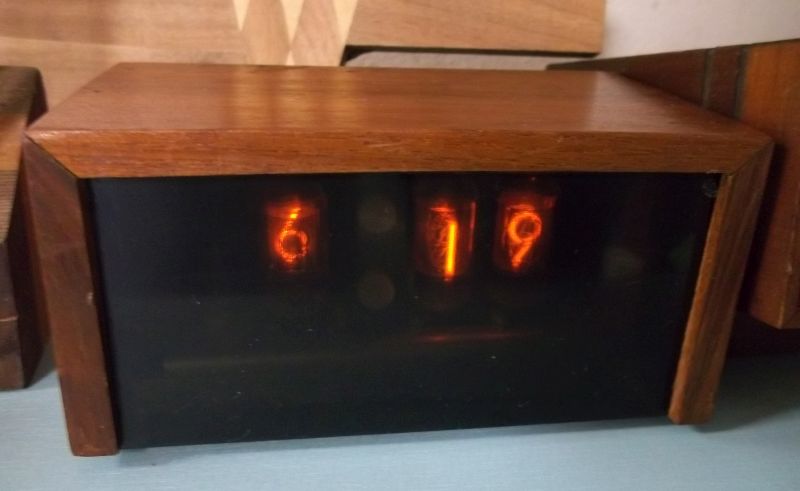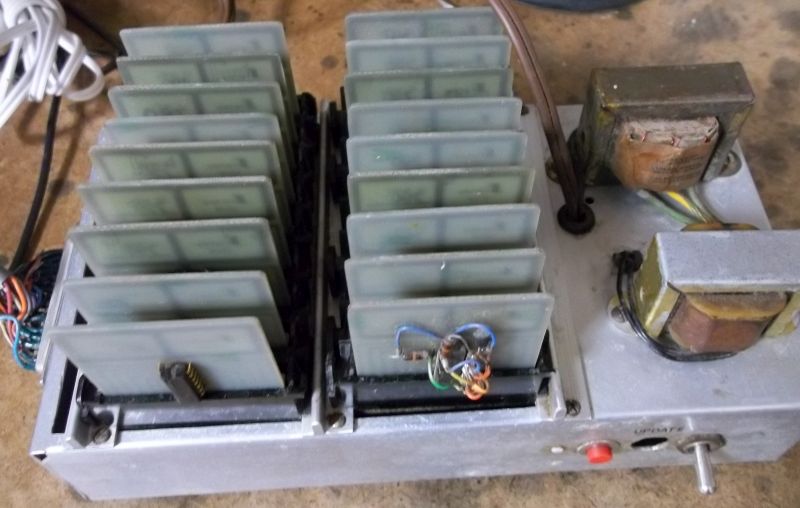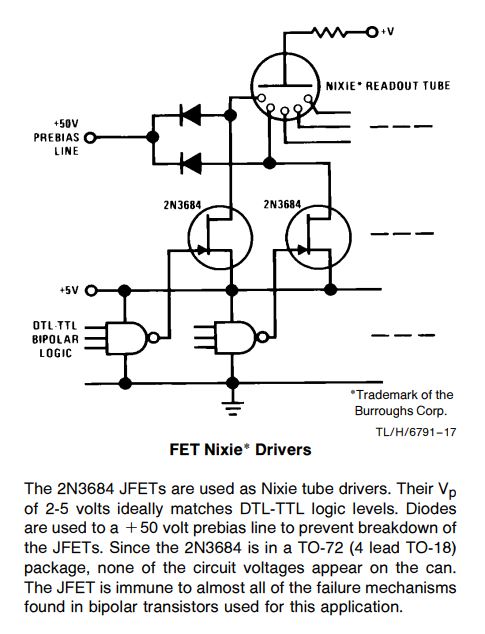March, 2021.Sometime between 1969 and 1970 I became interested in building a digital clock.
I was about 12 at the time and began sketching clock circuits using J-K flip flop dividers.
I am "clock boy."
My brother had some surplus RTL (resistor transistor logic) ICs mounted on circuit cards.
I was able to buy some Amperex ZM-1000 "Nixie" display tubes and some Fairchild BCD to Decimal HV driver ICs.
The ICs are mostly MC790P J-K flip flops, some MC789 inverters and a couple of misc gates.
All-in-all there are 19 ICs. (One is underneath on a Veroboard).
I wanted a small display so a multiconductor cable was used to link the "base" logic unit to the display head.
The display sat on my headboard with the clock stashed under the bed.
This was my first major electronics project.
Looking back on it almost 50 years later I realize the logic design was pretty solid.
The execution sucked - but hey - it was my first project and I was 12.
My Dad gets credit for the solid walnut case.
The clock display unit has three Amperex ZM-1000 "Nixie" displays. The hours "1" is a long neon.
The clock base unit uses 19 RTL (resistor transistor logic) ICs mounted on individual plug-in cards.
Most of the ICs are Motorola MC700-series RTL. A CMOS IC was installed "dead-bug" sometime in the 1980s due to failure.
Once I got a couple of Heathkit clocks I retired this unit.
It sat under my father's workbench for years absorbing sawdust, oil and dryer lint.
Sometime in the late 1980s or early 1990's I began phase one of the restoration replacing the 2N3055 regulator with a LM317.
An RTL IC failed and I had to cobble a dead-bug CMOS chip.
I later gave up because I realized it had become an unreliable pig.
The edgecards had became flakey and I didn't want to clean them and the receptacles.
The clock set in the garage and was later moved to the basement.
I decided, almost 50 years later to rescue it.
It took a can of Blue shower, a can of duster and a re-cap to bring it back to life.
Glad I did though.
I really like this old clock and decided to complete the restoration by replacing the "dead bug" CMOS IC I used to replace a MC780P.
The MC780P is an RTL decade counter and was unavailable, or at least I thought so, back in the 1980s when I first restored the clock.
Thanks to the miracle of eBay I was able to recently buy some MC780s with a 1970 date code and used this now 51-year-old IC to repair my clock.
This IC hasn't been powered since it was tested the last week of May 1970.

This is the third IC in that unit I've had to replace in the last 50 years so I decided to buy a few spares of the other RTL devices used.
Thanks to my newly-found MC780 I was able to replace the awful-looking dead bug.
Perhaps this clock will outlive me.
I took an inventory of the cards and it took 18 J-K flip flops (9 duals), 2 decade counters, 24 inverters, a dual 4 input NOR and three decoder-drivers.
19 ICs total.
I wished I could find the schematic for it - not so much to sort it out - but just to enjoy the trip back in time.
While going through a file folder I found this unique vintage clock from 1972 which predates the Mostek and National chips that made it easy.
It only uses 6 ICs and has a crystal timebase. https://proaudiodesignforum.com/images/ ... 3_1972.pdf
A couple of tricks make it unique and simple.
One is the offset in the hours display to simplify rollover from 12:00 to 1:00 and the other is using the decoded output to set counter modulus for the tens of minutes.

The 1971-era metal gate 4000-series CMOS was IIRC pretty expensive at the time so I probably couldn't have afforded to make it.
This is a trip down memory lane: Now we'd do all of this with a PIC or Arduino.



